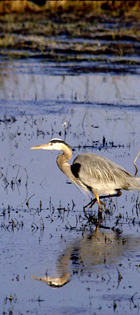|
The Conservation Commission is an official body of the municipality, created by vote of the local legislature, with its members appointed by the chief executive officer. The enabling legislation for the operation of Connecticut conservation commissions can be found in Chapter 97, Section 7-131a of the Connecticut General Statutes. Its duties and discretionary abilities stem from its purpose: "...the development, conservation, supervision and regulation of natural resources, including water resources within its territorial limits."
| |
New Open Space Law
In June 2012 Governor Malloy signed into law — Public Act No. 12-152, An Act Concerning the State’s Open Space Plan — that requires the CT Department of Energy and Environmental Protection (DEEP) to prepare the strategy for achieving the 21 percent goal in consultation with the state Department of Agriculture, the state Council on Environmental Quality, municipalities, regional planning agencies, and private land conservation organizations. CLICK HERE for PA 12-152.
Connecticut's Office of Responsible Growth Links to tools (grants, loans, technical assistance) for Conservation, Municipal, Non-Profits, Farmer, Developer and others.
< click here >
New website permits easy mapping of natural and cultural resources.
The University of Connecticut (UConn) and the Connecticut Department of Environmental Protection (DEP) today unveiled a new website that will allow local land use decision makers to practice better landscape stewardship and protect important natural resources in their communities.
The site, the Community Resource Inventory (CRI) Online (http://nemo.uconn.edu/tools/cri ) enables visitors to create a series of key natural and cultural resource maps for any of the state’s 169 municipalities, without any specialized knowledge of mapping or computer mapping technology. These maps provide essential information for land use planning at the local level. The maps are based on CT DEP and UConn statewide data. They include water resources, land cover, protected open space, and wetland and farmland soils, in addition to such cultural information as roads and utility service areas.
|
 |
Municipal land use commissions, contractors, town planners, engineers, farmers, and homeowners can now easily download soil information. The new US Department off Agriculture (USDA) Web Soil Survey site provides secure public access to the national soils information system. Click here to view site.
Soil surveys are needed for most land conservation activities, as well as private and commercial land development. With the new online SOIL SURVEY INFORMATION almost anyone in Connecticut can look up soils information for their specific location.
USDA designed the website with three easy-to-use features – Define, View, and Explore. When viewers access the web soil survey, they are asked to define a geographic area. Once a location is defined and projected on the screen, the viewer is offered the choice to print the map and related information, save it to their hard drive, or download the data for use in a geographic information system.
The viewer can also explore the designed location and receive information on soil suitability in relationship to usage. This provides the viewer flexibility in developing a report to address a specific need – whether it is to design a road, plant a field, or create a wetland for wildlife habitat. |
 |
Cutting on Wetlands and Other Preserved Land Connecticut’s preserved lands are under siege, according to, Preserved But Not Protected, a recent report by Connecticut’s Council on Environmental Quality (CEQ). The most common problem is illegal tree-cutting, but there are many other illegal actions to conservation lands owned by the state, municipalities, land trusts and other private entities. While evidence for encroachment of public and preserved land is easy to document there is a lack of legal recourse available to defend against them. Below are two articles on a recent Connecticut Supreme Court case involving the illegal cutting of 340 trees in wetlands on land owned by the East Haddam Land Trust and The Nature Conservancy. Both articles and CEQ’s Special Report are instructive for both Inland Wetlands and Conservation Commissions.
|
 |
CT DEP Victorious before the State Supreme Court: Mellon Tree-Cutting Subject to CEPA Relief. By Assistant Attorney General Janet P. Brooks |
 |
The Habitat Fall 2005 Damages for Wetlands Violations: Lesson from Ventres v. Mellon, by Mark K. Branse, Esq; The Habitat, Fall 2005 |
| |
Preserved But Not Protected, Connecticut’s Council on Environmental Quality; 2005 Special Report . |
|
Home :: CC :: IWC :: Tools :: About CACIWC ::Publications :: Support CACIWC :: Links :: Legislation :: Events
|


